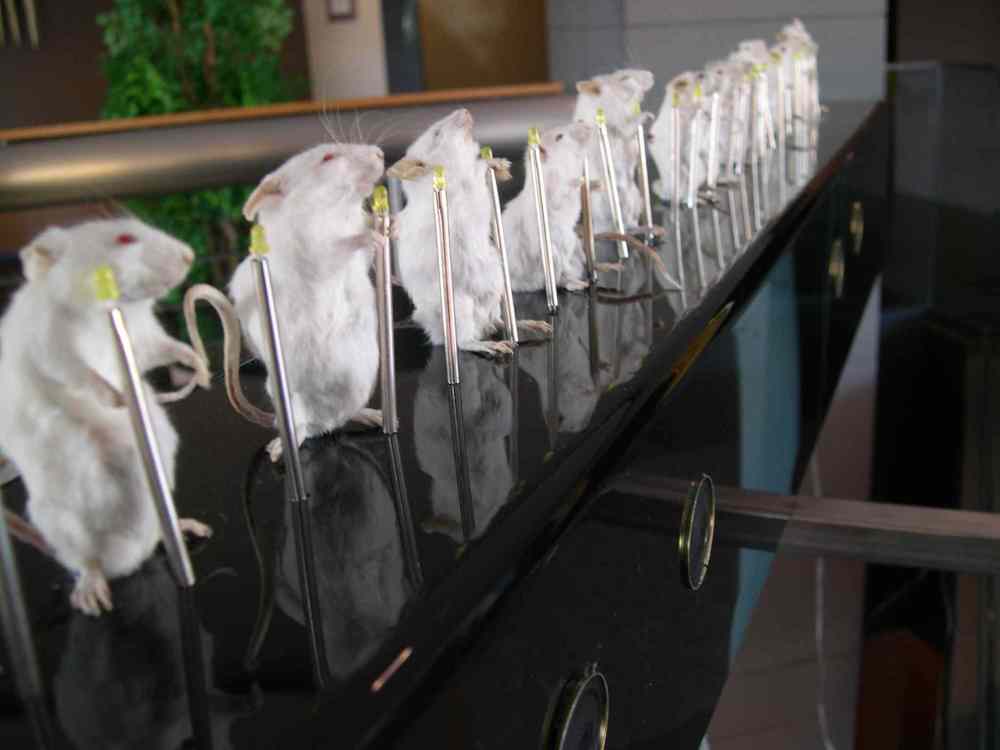Research, trial and error part of fine-art practice
Advertisement
Read this article for free:
or
Already have an account? Log in here »
To continue reading, please subscribe:
Monthly Digital Subscription
$1 per week for 24 weeks*
- Enjoy unlimited reading on winnipegfreepress.com
- Read the E-Edition, our digital replica newspaper
- Access News Break, our award-winning app
- Play interactive puzzles
*Billed as $4.00 plus GST every four weeks. After 24 weeks, price increases to the regular rate of $19.00 plus GST every four weeks. Offer available to new and qualified returning subscribers only. Cancel any time.
Monthly Digital Subscription
$4.75/week*
- Enjoy unlimited reading on winnipegfreepress.com
- Read the E-Edition, our digital replica newspaper
- Access News Break, our award-winning app
- Play interactive puzzles
*Billed as $19 plus GST every four weeks. Cancel any time.
To continue reading, please subscribe:
Add Winnipeg Free Press access to your Brandon Sun subscription for only
$1 for the first 4 weeks*
*$1 will be added to your next bill. After your 4 weeks access is complete your rate will increase by $0.00 a X percent off the regular rate.
Read unlimited articles for free today:
or
Already have an account? Log in here »
Hey there, time traveller!
This article was published 28/09/2015 (3643 days ago), so information in it may no longer be current.
Most people know that lawyers “practise” law. A doctor’s career is also known as a practice. Fewer people appreciate the fact that artists have practices too. In fact, one of my editors once removed the term from an article. It didn’t make sense, she said, for an artist’s career to be called a practice.
Well, yes, it does. In the United States, the professionalization of fine art began after World War Two, with the wide-scale expansion of university art departments. The trend then spread around the globe.
Young artists have a vibrancy and energy in their work that is often a joy to behold. The work of mature artists, for me, at least, is the most satisfying to spend time with. The best artists are avid researchers, learning through repeated trial and error. The best artists tenaciously follow lines of thought, over many years, to their farthest reaches.

This Friday at the News Café, audiences will be invited to learn about the practices of two such artists, Reva Stone and Seema Goel. Guest host Diana Thorneycroft, an artist herself, will interview both women.
If Stone’s name is familiar, it is because she is the recipient of a 2015 Governor General’s Award in Visual and Media Arts. Stone is not what most people typically think of as an artist. She doesn’t use paints or brushes, but interactive electronic technologies. She’s been making art for more than 30 years and her work has been hailed as groundbreaking.
Lately, Stone has been repurposing obsolete machines, imbuing them with eerie new life. A Radiopticon, for example, is a photograph projector from the early 1900s. Now, armed with sensors and a screen, Radiopticon is a robot that motors around the gallery, showing videos about photography and memory on its screen-shaped head. A second piece, Medcolator, was a vintage electric shock-therapy machine. The machine, rigged out with various technologies, is now “alive.” Seemingly self-aware, it displays video clips about the history of psychiatric treatment, pharmaceuticals, and neuroplasticity.
Experiencing Stone’s Radiopticon is unnerving. It bumps into corners, making it seem ungainly, but when it tried to locate me, I felt distinctly hunted. At one point, I felt as though it were reading my memories, projecting flickers of imagery from deep inside my subconscious. There are ghosts in Stone’s machines, as though the casing, circuits and wires are keepers of our long-forgotten past. Her practice spans an amazing distance, pulling antiquated technology from archives and museums, while reaching forward into future possibilities.
Saskatchewan’s Goel also has an art practice that is refreshingly unconventional. Having completed a master of fine arts in sculpture and almost completed a master of science, her work straddles both fields. Goel is most interested in the relationships humans form with each other, with animals, with places. Her work is incredibly varied in its use of materials, but it is often poignantly, uncomfortably funny. She’s been known to use stuffed mice, for example, to off-putting comedic effect. In a 2005 piece, 52 mice stand in a row. Holding candles, the mice are triggered by a digital circuit to sing, in a chorus of tiny, high-pitched voices, Happy Birthday to DNA.
The piece, which commemorates the 52nd anniversary of DNA’s discovery, is also the result of Goel’s research on our relationship with lab mice. As her artist statement notes, the species does not exist in nature but was constructed for use as scientific tool.
In another project, Goel recreated five Inuit sculptures out of spongy Wonder Bread, critiquing the commodification of Inuit culture and the diabetes epidemic that is caused, in part, by the low-nutrition food shipped to the North.
If Goel is a scientist, she’s the most un-stuffy scientist ever. If she’s an artist, she’s the most grounded in evidence and data. What her practice ultimately does is erase all borders between modes of learning. She uses whatever material she has at her disposal — mice, bread, wool, clay — to get us to re-examine our relationship with it. Her work makes me aware every single substance or object I live with has a complex story to tell.
Thorneycroft, who selected Stone and Goel from among hundreds of possible artists to interview, says this; “Both artists do work that appears to be very different, but once you start talking to them about their approach to their work, the similarities are remarkably similar.”
Thorneycroft also notes, “They both come across as activists; artists engaged in calling attention to our very troubled world.”
Sarah Swan is Winnipeg arts writer and educator. For tickets to this event, please call 204-697-7069.


